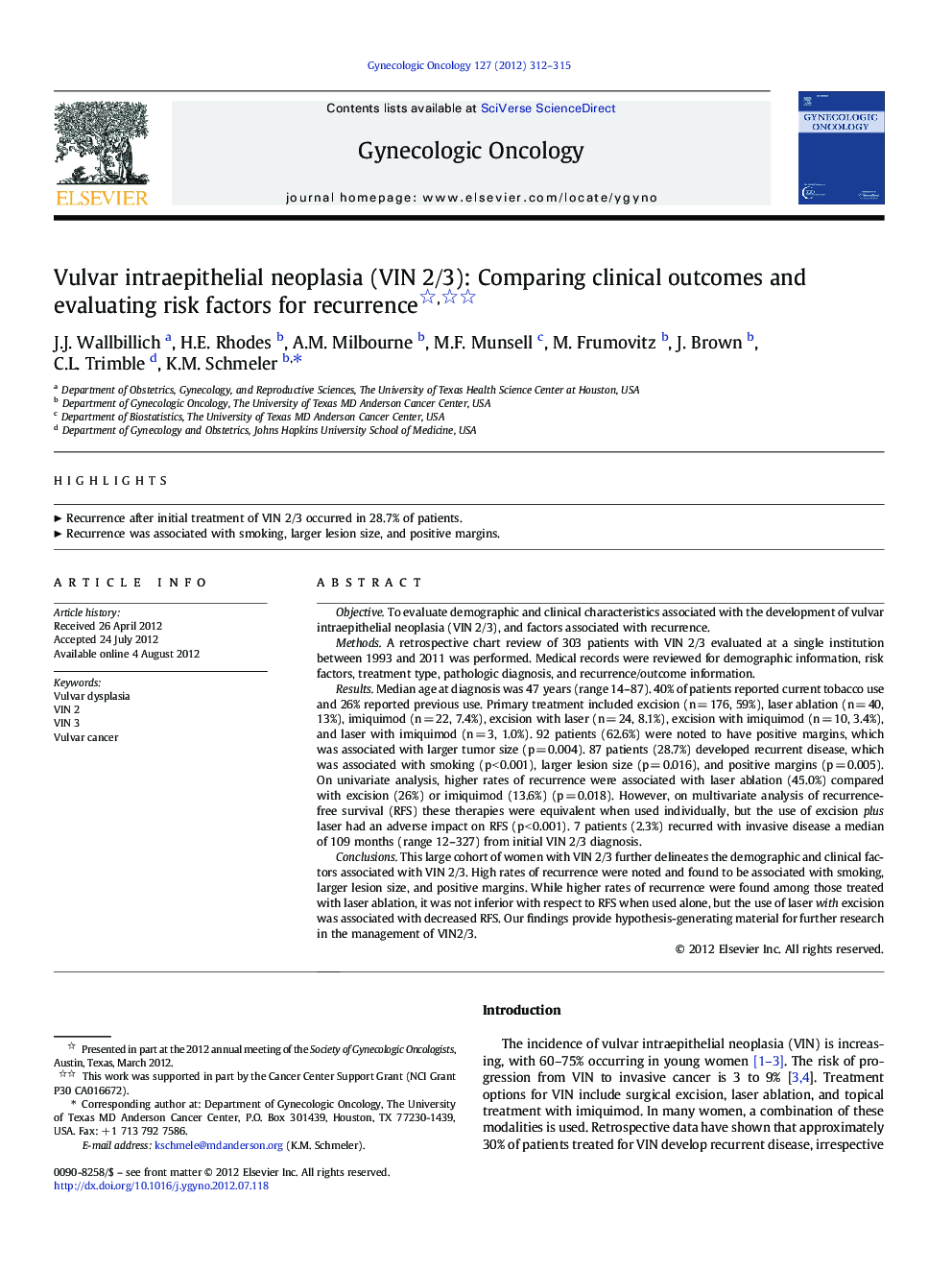| Article ID | Journal | Published Year | Pages | File Type |
|---|---|---|---|---|
| 3944921 | Gynecologic Oncology | 2012 | 4 Pages |
ObjectiveTo evaluate demographic and clinical characteristics associated with the development of vulvar intraepithelial neoplasia (VIN 2/3), and factors associated with recurrence.MethodsA retrospective chart review of 303 patients with VIN 2/3 evaluated at a single institution between 1993 and 2011 was performed. Medical records were reviewed for demographic information, risk factors, treatment type, pathologic diagnosis, and recurrence/outcome information.ResultsMedian age at diagnosis was 47 years (range 14–87). 40% of patients reported current tobacco use and 26% reported previous use. Primary treatment included excision (n = 176, 59%), laser ablation (n = 40, 13%), imiquimod (n = 22, 7.4%), excision with laser (n = 24, 8.1%), excision with imiquimod (n = 10, 3.4%), and laser with imiquimod (n = 3, 1.0%). 92 patients (62.6%) were noted to have positive margins, which was associated with larger tumor size (p = 0.004). 87 patients (28.7%) developed recurrent disease, which was associated with smoking (p < 0.001), larger lesion size (p = 0.016), and positive margins (p = 0.005). On univariate analysis, higher rates of recurrence were associated with laser ablation (45.0%) compared with excision (26%) or imiquimod (13.6%) (p = 0.018). However, on multivariate analysis of recurrence-free survival (RFS) these therapies were equivalent when used individually, but the use of excision plus laser had an adverse impact on RFS (p < 0.001). 7 patients (2.3%) recurred with invasive disease a median of 109 months (range 12–327) from initial VIN 2/3 diagnosis.ConclusionsThis large cohort of women with VIN 2/3 further delineates the demographic and clinical factors associated with VIN 2/3. High rates of recurrence were noted and found to be associated with smoking, larger lesion size, and positive margins. While higher rates of recurrence were found among those treated with laser ablation, it was not inferior with respect to RFS when used alone, but the use of laser with excision was associated with decreased RFS. Our findings provide hypothesis-generating material for further research in the management of VIN2/3.
► Recurrence after initial treatment of VIN 2/3 occurred in 28.7% of patients. ► Recurrence was associated with smoking, larger lesion size, and positive margins.
